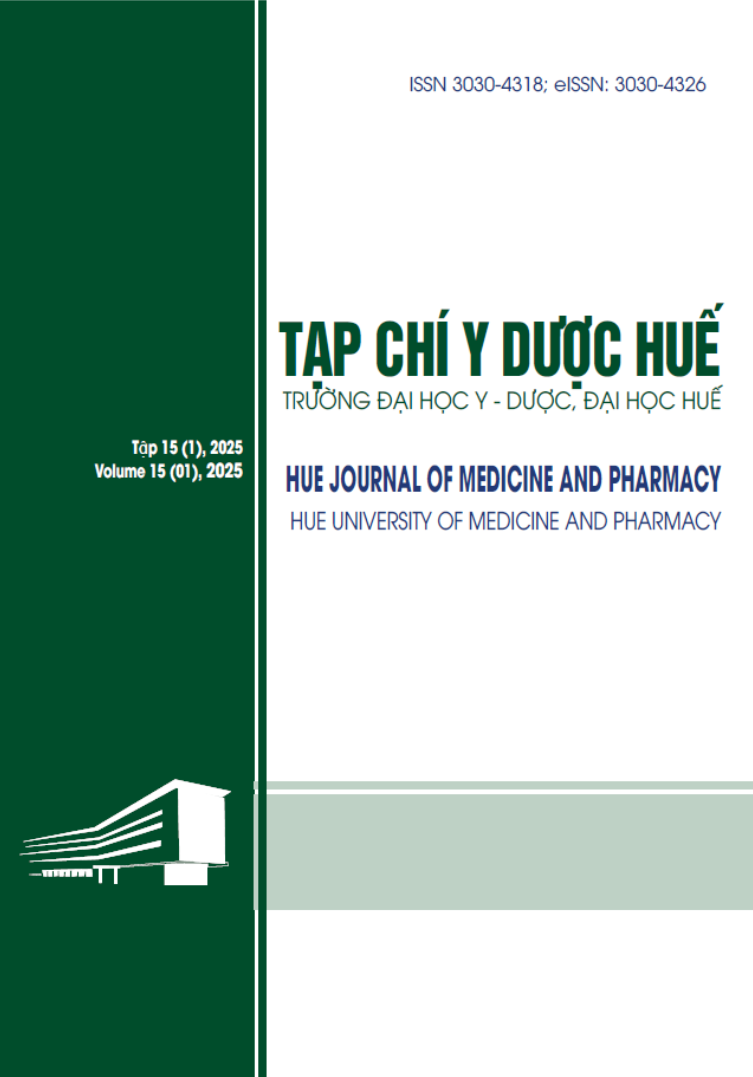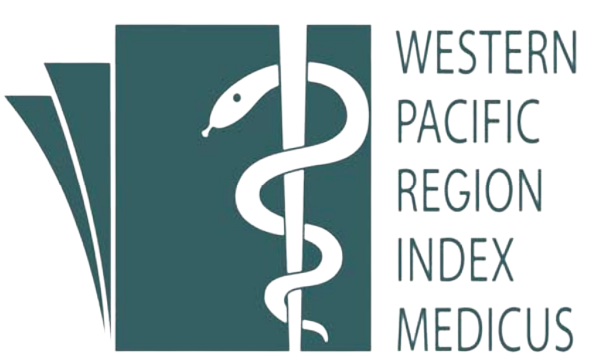Tóm tắt
Background: The Gymnosporia genus holds substantial potential for bioactive compound discovery, yet its phytochemical composition remains underexplored relative to its botanical diversity. In Vietnam, aside from preliminary studies on G. stylosa, systematic research on Gymnosporia species is notably lacking. This study provides the understanding of the chemical constituents of G. chevalieri, establishing a basis for future research on its potential applications and bioactive properties.
Materials and methods: The leaves of G. chevalieri were macerated in methanol to produce a crude extract, which was further fractionated via liquid-liquid partitioning using n-hexane and ethyl acetate as solvents. Compounds were then isolated and purified using various chromatographic techniques. Structural elucidation was achieved through 1D- and 2D-NMR and HR-ESI-MS analysis, supported by comparison with previously reported spectroscopic data.
Results & Conclusion: Seven phenolic compounds and two carotenoids were isolated from G. chevalieri leaves. These were identified as syringaldehyde (1), 3,7-dihydroxy-6-methoxy-2,7-dimethyldibenzofuran (3), atalantoflavone (4), lutein (6), lutein 3′-methyl ether (7), and two mixtures: 4-hydroxybenzaldehyde (2a) with 4-hydroxy-3-methoxybenzaldehyde (2b), and breynioside B (5a) with 6′-O-vanilloylarbutin (5b). Notably, compounds 2-7 were isolated from the Gymnosporia genus for the first time.
| Đã xuất bản | 09-05-2025 | |
| Toàn văn |
|
|
| Ngôn ngữ |
|
|
| Số tạp chí | Tập 15 Số 2 (2025) | |
| Phân mục | Nghiên cứu | |
| DOI | 10.34071/jmp.2025.2.24 | |
| Từ khóa | Gymnosporia chevalieri, phenolic compounds, carotenoid |

công trình này được cấp phép theo Creative Commons Attribution-phi thương mại-NoDerivatives 4.0 License International .
Bản quyền (c) 2025 Tạp chí Y Dược Huế
Gymnosporia (Wight & Arn.) Hook.f. | Plants of the World Online | Kew Science [Internet]. Plants of the World Online [cited 2024 Nov 10]; Available from: http://powo.science.kew.org/taxon/urn:lsid:ipni.org:names:1034880-2
Pham HH (2000), An illustrated flora of Vietnam [in Vietnamese], 2nd ed, Tre Publishing House, Ho Chi Minh City, Viet Nam, 151-153.
Nguyen TTH, Truong BN, Pham VC, et al (2014), Chemical constituents of the stems of Gymnosporia stylosa (Celastraceae) [in Vietnamese]. Vietnam Journal of Chemistry; 52:514–514. https://doi.org/10.15625/0866-7144.2014-0023
Tatsimo JSN, Toume K, Nagata T, Havyarimana L, Fujii T, Komatsu K (2019), Monoglycerol ester, galloylglucoside and phenolic derivatives from Gymnosporia senegalensis leaves. Biochemical Systematics and Ecology, 83:33–8.
Shahidi F, Ambigaipalan P (2015), Phenolics and polyphenolics in foods, beverages and spices: Antioxidant activity and health effects – A review. Journal of Functional Foods, 18:820–97.
Khoo HE, Prasad KN, Kong KW, Jiang Y, Ismail A. (2011), Carotenoids and their isomers: color pigments in fruits and vegetables. Molecules, 16(2):1710–38.
Pedroso APD, Santos SC, Steil AA, Deschamps F, Barison A, Campos F, et al. (2008), Isolation of syringaldehyde from Mikania laevigata medicinal extract and its influence on the fatty acid profile of mice. Rev bras farmacogn, 18:63–69.
Rout L, Nath P, Punniyamurthy T (2007), Vanadium‐Catalyzed Selective Oxidation of Alcohols to Aldehydes and Ketones with tert‐Butyl Hydroperoxide. Advanced Synthesis & Catalysis, 349:846–848.
Bui TTL, Dang HP, Nguyen TN (2015), Investigation of chemical constituents from the chloroform extract of the stem of Paramignya trimera (Oliver) Burkill (Rutaceae). in Pro-ceeding of the Conference of Analytical Chemistry, Valencia, Spain.
Kim, Jung Mi, 고려경, 현진원, Lee, Nam Ho (2009), Identification of New Dibenzofurans from Distylium racemosum. Bulletin of the Korean Chemical Society, 30(1):261–263.
Ouete JLN, Sandjo LP, Kapche DWFG, Liermann JC, Opatz T, Simo IK, et al (2013), A new flavone from the roots of Milicia excelsa (Moraceae). Z Naturforsch C J Biosci, 68(7–8):259–63.
Kieu TPL, Nguyen HQ, Nguyen VC, Nguyen QT, Vu HT, Nguyen VT, Nguyen PT (2020), Secondary metabolites from the stem barks of Rhizophora mucronata Lamk. Vietnam Journal of Science and Technology, 58(6): 653-664.
Q.X.Wu, Y.Li, Y-P.Shi (2024), Antioxidant phenolic glucosides from Gentiana piasezkii. Journal of Asian Natural Products Research, 8(5): 391-396.
Wasana Prapalert, Dammrong Santiarworn, Saisunee Liawruangrath, Boonsom Liawruangrath and Stephen G.Pyne (2016), The Isolation of Lutein and Lutein 3’-methyl ether from Peristrophe lanceolaria. Natural Product Communications, 11(12): 1793-1795.
Wu J, Fu YS, Lin K, Huang X, Chen Y jing, Lai D, et al (2022), A narrative review: The pharmaceutical evolution of phenolic syringaldehyde. Biomedicine & Pharmacotherapy, 153:113339.
Niquini FM, Tenorio JC, da Silva MFGF, Ribeiro AB, Wanderley A, Ellena J, et al (2020), On the conformation, molecular interactions and electron density of a natural flavonoid derivative. Journal of Molecular Structure, 1220:128632.
Posri P, Suthiwong J, Takomthong P, Wongsa C, Chuenban C, Boonyarat C, et al (2019), A new flavonoid from the leaves of Atalantia monophylla (L.) DC. Natural Product Research, 33(8):1115–1121.
Mitra S, Rauf A, Tareq AM, Jahan S, Emran TB, Shahriar TG, et al (2021), Potential health benefits of carotenoid lutein: An updated review. Food and Chemical Toxicology, 154:112328.
J-H Ha et al (2000), 4 Hydroxybenzaldehyde from Gastrodia elata B1 is active in the antioxidation and GABAergic neuromodulation of the rat brain. Journal of Ethnopharmacology, 73(1_2): 329-333.
Paul V, Tripathi A, Rai D, T Selvaraj R, Srivastava S (2021), A comprehensive review on vanillin: its microbial synthesis, isolation and recovery. Food Biotechnology, 35:22–49.
Nguyen TM, Le XT, Nguyen MTK (2017), Chemical constituents of Breynia vitis-idaea (Burm. f.) C. E. C. Fischer. AIP Conference Proceedings, 1878(1):020041.






